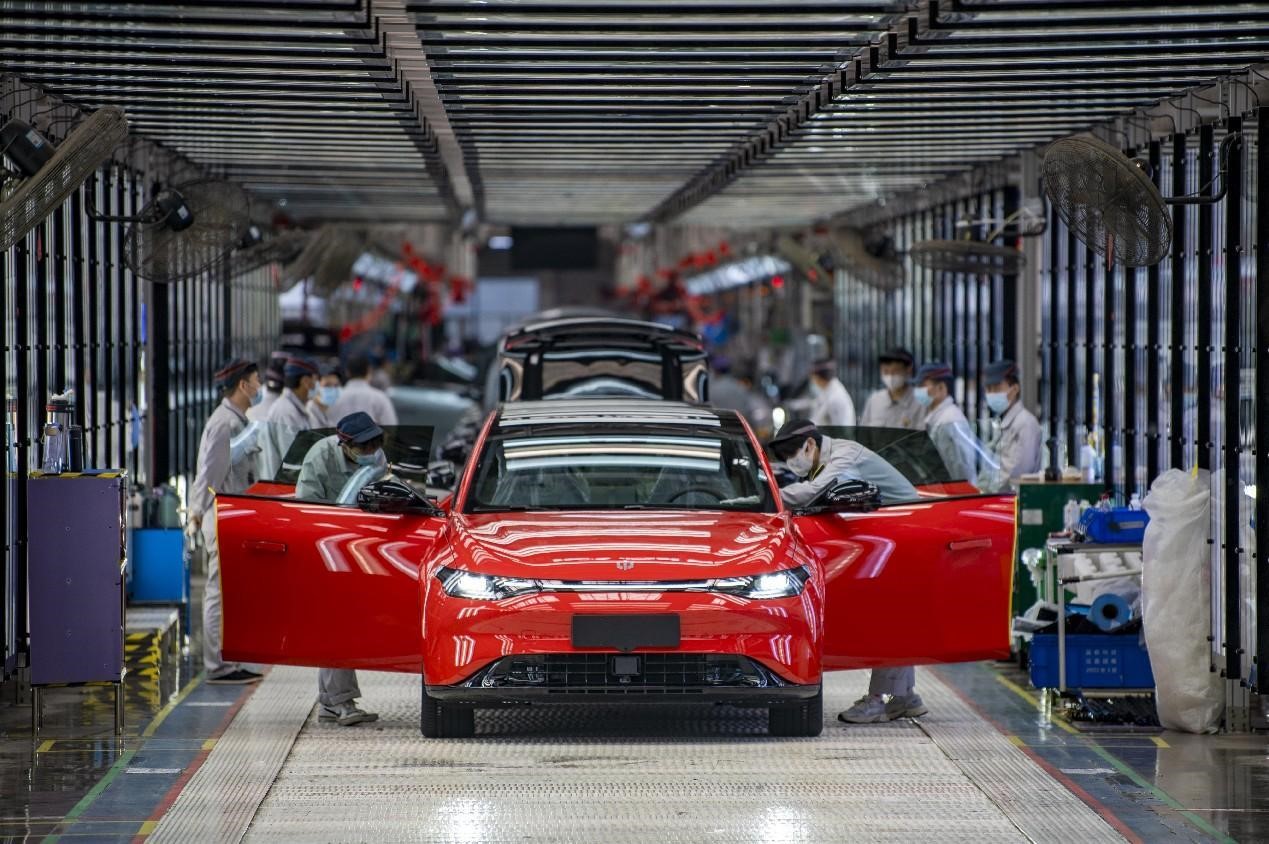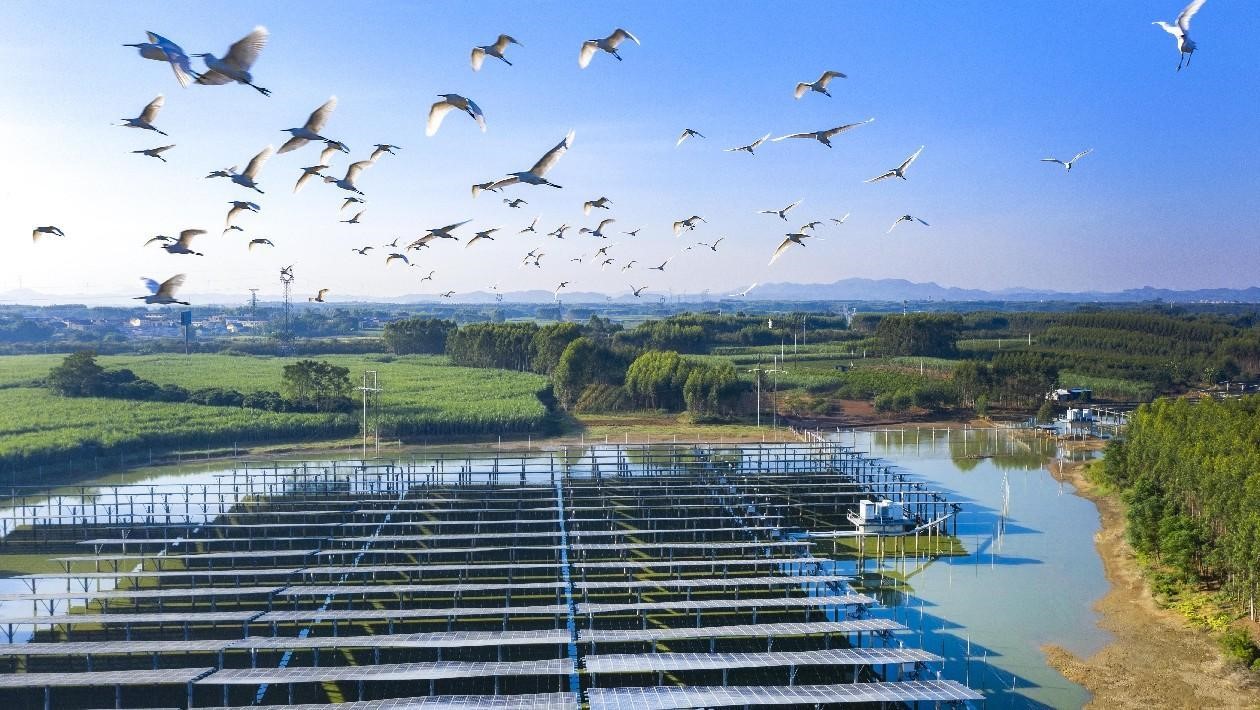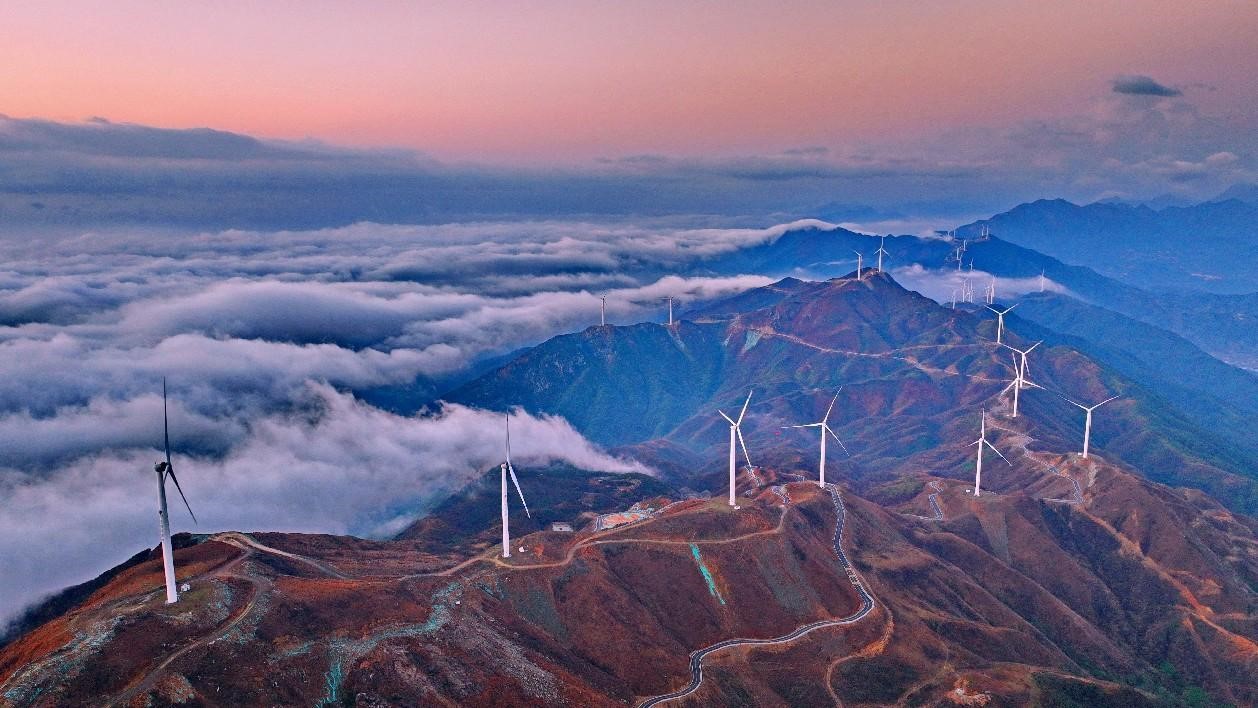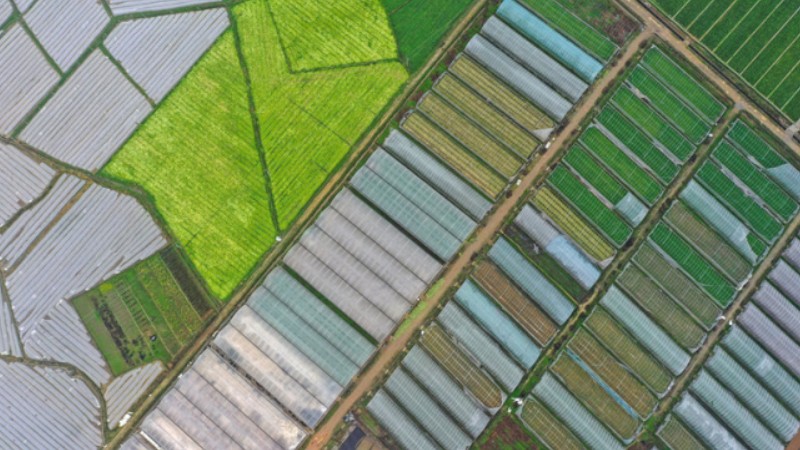China sees remarkable progress in green, low-carbon transition

A wind turbine is being erected in a 30-kW wind farm in Ganzhou district, Zhangye, northwest China's Gansu province, Feb. 10, 2023. (People's Daily Online/Yang Yongwei)
China's total installed capacity for renewable energy generation exceeded 1.2 billion kW, ranking first in the world. The new energy vehicle (NEV) industry registered exponential growth in the country, with production and sales topping the world for eight consecutive years.
Besides, thanks to afforestation efforts, 64 million hectares of trees have been planted in China over the past decade. During this period, desertification prevention and control was carried out on over 18.53 million hectares of land, 40 million hectares of land were improved through sowing grass, and more than 800,000 hectares of wetland were added or restored.
This set of data indicates China's accelerated green transition as well as remarkable progress towards its aim to peak carbon dioxide emissions before 2030 and to achieve carbon neutrality before 2060.
Chinese modernization is the modernization of harmony between humanity and nature.
Efforts to prioritize ecological conservation and to advance green, low-carbon and high-quality development can be observed everywhere in the country, from the southeast coast to the inland area in northwest China, and from vast fields to the Gobi Desert.
On the fringe of northwest China's Mu Us Desert, a 2,000-MW photovoltaic (PV) project is currently being built by the Ningxia branch of the China Energy Investment Corporation. The project, built on unused lands such as goafs and barren slopes, is expected to transmit 3.7 billion kWh of green electricity to east China each year upon completion.
In Zhangpu, southeast China's Fujian province, China's first large-scale offshore wind farm using turbines with a single capacity of 16 MW is under construction. The wind farm will save about 500,000 tons of standard coal and reduce around 1.35 million tons of carbon dioxide emissions every year.

New energy vehicles roll off the production line in a workshop of a carmaker in Jinhua, east China's Zhejiang province (People's Daily Online/Hu Xiaofei)
China has built the world's largest clean power generation system. It ranks first in the world in terms of the installed capacities of wind, PV, hydro and biomass power generation.
Besides, the country has witnessed a significant rise in the efficiency of energy utilization.
According to Zhao Chenxin, vice chairman of the National Development and Reform Commission, China's average annual economic growth of 6.6 percent has been supported by an average annual growth of 3 percent in energy consumption from 2012, and the per unit GDP energy consumption dropped by 26.4%. China is among the countries with the fastest reduction in energy intensity, Zhao added.
As China pushes for the synergetic progress of economic development and pollution reduction, green industries have grown into a new driver of the country's economic growth.
China produces 70 percent of the global market share of key components such as PV modules and wind turbines. The country produced over 7 million NEVs last year, and Chinese-made vessels powered by liquefied natural gas, methanol and other green energy constituted nearly half of the global market.
The country sees fruitful results in the building of green and low-carbon industrial chains, and is leading the world in new energy, pollution treatment and environment monitoring technologies.
Ceaseless efforts have brought prominent improvements in ecology and the environment. People are getting more sense of happiness and security from the sound ecological environment.

Photo shows a photovoltaic project in Xinsheng village, Gula township, Binyang county, south China's Guangxi Zhuang autonomous region. (People's Daily Online/Zeng Xiangzhong)
China has become the world's fastest country in improving air quality. In 2022, the average concentration of PM2.5 in cities at and above the prefecture-level fell to 29 micrograms per cubic meter, from 46 micrograms per cubic meter in 2015.
Besides, the proportion of surface water at or above Grade III in the country's five-tier water quality system reached 87.9 percent last year, and the country has hit the target of "zero import" of solid waste.
China has always been taking earnest actions in climate governance. It has reinforced the effort to achieve its nationally determined contributions targets. It will make the steepest cuts in the world to the intensity of its carbon emissions, and complete the process from carbon emissions peaking to carbon neutrality in the shortest span of time.
In 2022, China's renewable energy generation was equivalent to a reduction of 2.26 billion tons of domestic carbon dioxide emissions. Its exports of wind power and PV products helped other countries reduce emissions by approximately 573 million tons.
The two figures added up to 2.83 billion tons of emissions, or about 41 percent of the world's total carbon emissions reduction converted from renewable energy.
Since 2016, working in other developing countries, China has launched 10 low-carbon demonstration zones, 100 projects for climate change mitigation and adaptation, training sessions on climate change response for 1,000 people, and more than 200 foreign assistance programs on climate change.

Photo shows a wind farm on a mountain in Shuangxi township, Shangyou county, Ganzhou, east China's Jiangxi province. (People's Daily Online/Zhu Haipeng)
China is committed to working with other countries on promoting green development under the Belt and Road Initiative (BRI).
In order to establish a cooperation mechanism for green and low-carbon development under the BRI, China has signed an MoU with the United Nations Environment Programme on building a green Belt and Road, and reached more than 50 cooperation agreements on eco-environmental conservation with relevant countries and international organizations.
It also has trained 3,000 people from more than 120 countries under the Green Silk Road Envoys Program.
China's mature technologies and experiences in desertification prevention and control are helping Africa build a "green Great Wall" that enhances the continent's capability in resisting the southward expansion of the Sahara Desert.
The Beleolico offshore wind farm, the first offshore wind power project of Italy, whose key equipment was supplied by a Chinese enterprise, was connected to the grid. The project is able to power nearly 20,000 households.
In addition, Chinese new energy equipment and intelligent digital systems are now contributing to the green and low-carbon development of Vientiane Saysettha Development Zone, Laos.
These stories of green development, jointly realized by China and other countries, are making important contributions to the world's ecological progress.
Photos
Related Stories
- Northeast China's Changchun enjoys fruitful results in expansion of urban greenery
- China tops world in key green areas, report says
- Environment gets new focus in advisory body
- Guardians of the 'kidneys of earth' write stories of harmonious coexistence between man and nature
- China continues to tackle noise pollution in 2021-2025
Copyright © 2023 People's Daily Online. All Rights Reserved.









